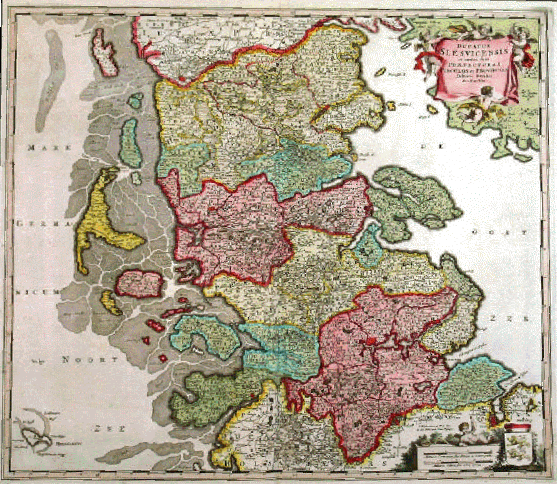Collectif Argos
(MIT)

Thus a visit to the Blarigui on Lake Chad. Pictures show the dry barren lands where the lake --- fourth largest in Africa --- has shrunk, now down to 10% of its former size. It used to be called "ocean" by those who lived on it and fished its rich waters. Now "the water in the lake is stagnant, murky and muddy."
People still fish there, but the catch is so small that many of the men --- they are called "climate refugees" --- have had to become farmers on the impoverished land. They still drink from the lake, but it makes them sick. Mothers hang good-luck charms around their children's necks to ward off disease.
Or go to the other end of the earth, to Nepal, to the Khumbu Valley. Twenty-five years ago, "an enormous block of ice came loose from the glacier and splashed in the lake." A rock debris dam disintegrated and flooded 90 kilometers down the valley. Animals were drowned; farms were destroyed; houses washed away.
The flood was caused by melting glaciers and glaciers, as one expert reports, are "climatic record keepers." Interviews with the locals of Khumbu Valley reveals that none of them have heard of global warming, but they know something fishy is going on. Their lands are flooding, paths between villages are washing away, and as a Buddhist nun reports, "The Himalayan Mountains were once white. Now they have become black."
Climate Refugees has ten essays with extensive photographs from Alaska, Bangladesh, Chad, the North Sea, Tuvalu and the Gulf Coast of the United States. The disasters include flooding, hurricanes, tsunami, desertification, loss of wildlife, sinking landmass: the works.
In the Indian Ocean, on the Maldives, there is a loss of valuable coral reefs; in Bangladesh, the ocean is creeping up onto the farmlands and into the cities; in Longbaoshan, just north of Beijing, the growing drought brings "the yellow dragon" (sandstorms):
- Each year, some 90,000 tonnes of sand swept by the wind from the Gobi Desert arrives in clouds at Longbaoshan before moving through Beijing and on to Japan and Korea. For entire days during the months of March and April, the capital is buried under a thick dusty fog and experiences dangerous peaks in pollution.
In all, this is a beautiful, oversized book with handsome pictures. But the story is so hard, the message so bleak, that after a while you find yourself drifting off, thinking that it's such a mess out there ... perhaps it's better just to admire the color shots (over 200), ignore the text, think of something else: last month's dining at The Taj --- that great Indian restaurant in center city; last year's vacation in Yucatan (just before the hurricane moved in); next year to be spent in the Lake country, ambling with the ghost of Wordsworth.
I know, the world is in a mess: and I'm one of those who's contributing to it --- me and my car and my computer and my footprint; I should be ashamed of myself (I am, I am!) --- but what's to be done? Well, we could go to Langeness, there on the North Sea.
Since the great storm of 1362 --- called "The Great Drowning" --- the Frisians have been building walls against the sea, building up the foundations under their houses, meter by meter. Despite storms sweeping through, and with the kind assistance of the government, the landuntern have survived, will continue to do so. "Halligen, Sentries on the North Sea" shows some of the bleakest pictures in the book --- storm, wind, cold --- but it is the most hopeful chapter.
As one of the locals says, there is always "the feeling of sweet solitude, the landscape suddenly changing dramatically right at your doorstep, with all of our houses like little islands." There are a few problems that come with the storms, she admits:
- They carry away with them hay that was freshly cut earlier on a beautiful summer's day, or worse, they drown a few cows or sheep that we didn't have time to get to safety.
But they still go on, cutting up the rocks, building up the barriers, piece by piece, making them higher and higher, making their homes all that much safer ... all less subject to the climatic havoc created by the rest of us.